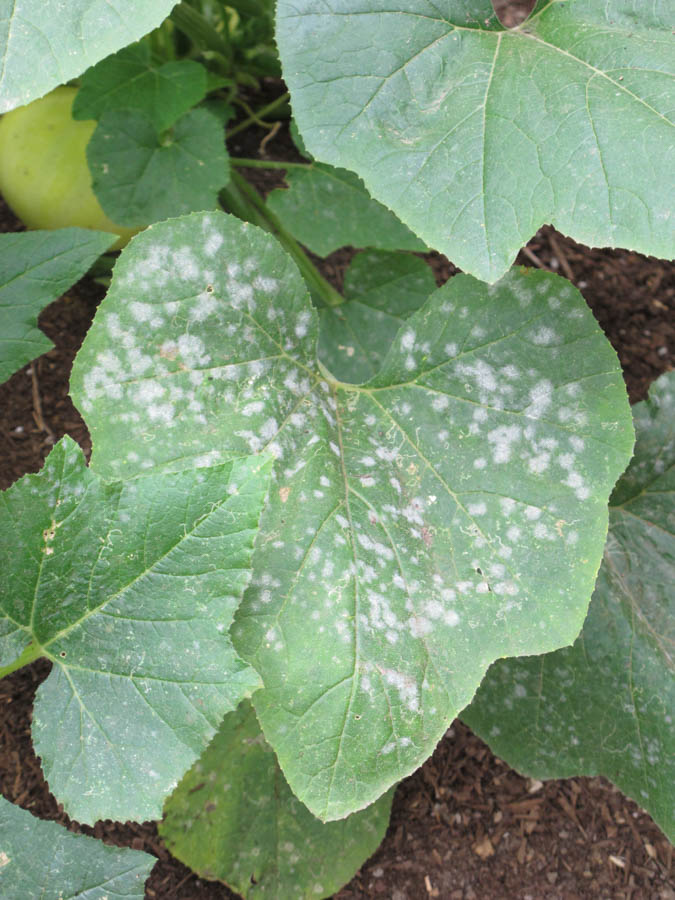Mildews on Cucurbits: Identifying, Preventing and Treating

by Ann Clary and C. Darren Butler
Mildews are a common malady of cucurbits such as summer squash (including zucchini), winter squash (including pumpkin), cucumbers and melons. How can you identify a disease as mildew? And how should it be prevented and treated?
What is mildew? Powdery and downy mildew are the most common leaf-diseases of cucurbits in many portions of California. They appear as a whitish circles or whitish layers on the upper or lower surfaces of leaves, yellowing or dead spots, or pale or yellow angular leaf sections, and may be mistaken for other problems, such as nutrient deficiencies. Powdery mildew is more commonly a problem in many parts of California than downy mildew, and especially prevalent later in summer or after periods of hot weather.
Typical whitish circles of mildew
How to prevent mildew. Avoid wetting foliage when watering. Some mildews can be discouraged using a nontoxic homemade spray of one tablespoon each of baking soda and tea tree oil per quart of water, shaken vigorously and regularly as applied via spray bottle. Mildews are often difficult to control and are best managed through prevention and good cultural practices, such as planting resistant varieties, planting in areas with good air circulation, keeping foliage dry, less-frequent irrigation, encouraging biologically active “living” soil that will support strong plant immune systems, and rotating crops.
Note that the plant leaves in the shade are covered with mildew while those in the sun are not.
Living with mildew. Mildews are often not fatal and squash may produce reasonable yields and fresh uninfected leaves despite ongoing infections on older leaves. The majority of cucurbit plants develop mildew infections by mid-to-late summer in warm weather portions of California, as their vigorous fruiting slowly exhausts them and their immune systems weaken.
The older leaves of this zucchini plant are clearly infected with mildew, yet the plant continues to produce fruit.
This is an updated version of an article previously published on June 7, 2017. The prior version focused exclusively on mildews on zucchini plants; the current article has been updated to include mildews on other squash, cucumbers and melons.
Other articles of interest:
Growing Winter Squash and Pumpkins in the California Home Garden
Growing Summer Squash (Including Zucchini) in the California Home Garden
Growing Cucumbers in the California Home Garden


